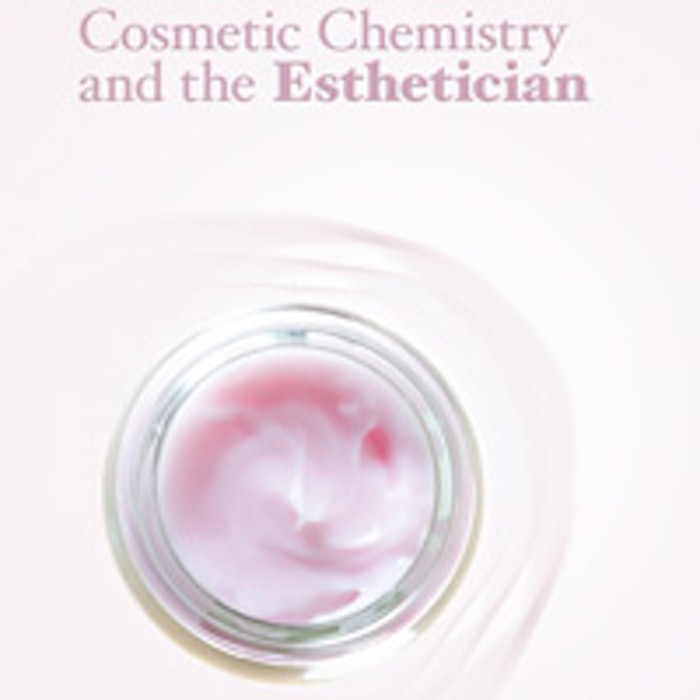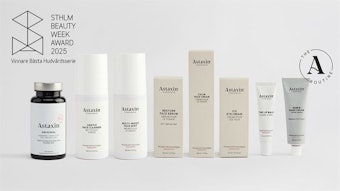
The ever-evolving esthetic industry is consistently being introduced to new and exciting ideas for improving the skin. With all that is available, it can often be difficult to determine which products will be effective. Superior formulations are out there; however, many of the industry’s most popular and beneficial ingredients are unstable and sensitive to breakdown. Although laboratory testing is needed to truly evaluate a formula’s efficacy, a basic understanding of cosmetic chemistry assists the esthetician in identifying the product components that contribute to its stability, penetration and activity.
One common misconception regarding topical products is that the results come from one ingredient. In actuality, the formulation as a whole leads to a product’s ability to deliver results. Cosmetic products consist of several components, including the following.
Active ingredients. These determine a product’s greatest topical benefit. Examples include retinoids, vitamin C, peptides, antioxidants and sunscreen agents.
Skin conditioning agents. These improve the skin’s surface and provide a soft, smooth appearance. Examples include glycerin, urea, natural oils, sodium PCA and silicones.
Functional ingredients. These create the end product, such as a cream or serum, and act as vehicles—or carriers—for the active ingredients. Examples include surfactants, emulsifiers, thickeners and preservatives.
Multifunctional ingredients. These provide some topical benefits and also assist the vehicle. Examples include sorbitol, cetyl alcohol, glycol stearate, phenoxyethanol and benzyl alcohol.
Each of these components is essential to a product’s function and benefit. Product performance depends on the active ingredients’ biocompatibility, the use of appropriate product vehicles and delivery systems, and the stability of all of the ingredients within a formulation.
Hype versus science
It can be tempting to choose products because of the new, exciting ingredients they offer; however, scientific data is the most important detail to consider when choosing topical products. The spa professional should always consider that, although newer ingredients may seem intriguing, clients need products that work. Many of the most effective cosmetic ingredients are those that have been available for decades, and these typically have significant research backing their benefits.
Retinoids. These include all derivatives of the vitamin A family, such as retinoic acid, retinaldehyde and retinol. Although retinoic acid is the bioavailable (useful) form of vitamin A for the skin, many clients find it topically sensitizing. Fortunately, retinaldehyde and retinol are successfully converted into retinoic acid within the skin. This conversion makes it possible to achieve the results of retinoic acid without residual inflammation.
Studies have found that retinoids stimulate the production of collagen, hyaluronic acid and elastin. They are also a superb choice for hyperpigmentation, because they help to inhibit melanogenesis at multiple points. Retinoids also encourage cell turnover, bringing youthful, evenly pigmented cells to the skin’s surface. Acne-sufferers also benefit from retinoids’ ability to prevent follicular plugs.1–3
Vitamin C. The only true, bioavailable form of vitamin C is L-ascorbic acid, although esters, such as ascorbyl palmitate, are often incorrectly referred to as vitamin C. When applied topically, L-ascorbic acid is able to stabilize and encourage the production of collagen. The additional antioxidant, anti-inflammatory and UV-protective benefits provided by L-ascorbic acid make it favorable for virtually all skin types and conditions.4–5
Peptides. All peptides are chains of amino acids. When applied topically, peptides are able to trigger specific functions within the skin. Although there are multiple topical peptide ingredients available, those used to treat visible aging have the most compelling studies backing their efficacy. Palmitoyl pentapeptide-4 stimulates types I and III collagen and dermal fibronectin; palmitoyl oligopeptide stimulates multiple dermal fibroblast production—including collagen; and acetyl hexapeptide-8 inhibits the repetitive motions that lead to dynamic wrinkling, such as crow’s-feet, frown lines and smile lines.6–8
Antioxidants. These substances prevent and reverse free radical damage, and many antioxidants offer more than one free radical-quenching benefit. L-ascorbic acid, resveratrol, tea polyphenols, vitamin E and glutathione act by donating electrons to unstable, damaged cells in the skin and body. Silybin (milk thistle), L-ascorbic acid and resveratrol offer additional benefits by chelating damaging metal ions from the affected cell. Finally, certain antioxidants, such as L-ascorbic acid, vitamin E and glutathione support, protect and regenerate one another, leading to sustained protection against oxidation. All skin types benefit from antioxidants.
Delivering results
A common question with skin care products is: What is the product’s delivery system? Although it is a valid question, it is more useful to understand when a delivery system is important. Certain active ingredients, such as retinoids and L-ascorbic acid, are typically more effective if a delivery system is employed. Delivery systems include ingredient encapsulation in lipids, microcapsules or liposomes, and micronization, which is formulating with very small ingredient particles. These delivery mechanisms are used to ensure a product’s active ingredients reach the level of the skin where they will provide the most benefit. Although delivery systems of this kind certainly have their place within the industry, most skin care products do not need them to be effective.
A product’s vehicle is most often what assists with product penetration. A vehicle refers to a product’s base, which is an emulsion, a suspension or a gel. Emulsions have a creamy consistency and are formulated to ensure the active ingredient is evenly distributed throughout the product. Emulsions combine water-soluble and oil-soluble ingredients, leading to penetration into both the skin’s aqueous and lipid environments. In some cases, thick creams can impede active ingredient penetration, because traveling through the product’s base itself requires a significant amount of a molecule’s energy. For this reason, emulsions are typically better suited for moisturizers, versus corrective topicals.
Suspensions are usually in liquid form and separation of a suspension’s ingredients is typical. Agitating the bottle is necessary to redistribute the ingredients throughout the product, ensuring the active ingredients penetrate into the skin properly. Suspensions are used when a product’s ingredients will not dissolve when mixed with oil or water. Many times, cleansers will be suspensions. A gel base is commonly used in serum products. Gels are transparent, semi-liquids that are either completely water-soluble or completely oil-soluble. Gels are thinner and typically penetrate easier than emulsions, making them the more common vehicle for corrective products.
Stable and effective
Stability pertains to two important aspects of a product: the breakdown of its active ingredients and the prevention of abnormal microbial growth. Some think of preservatives as a negative; in fact, preservatives protect the product and the consumer by preventing the growth of harmful bacteria, yeast and mold. In actuality, all products that contain water must have some type of preservative system in place. Certain multifunctional ingredients offer preservative properties as well as other benefits, allowing for misleading “preservative-free” claims.
If a product breaks down, or oxidizes, it loses efficacy. Oxidation involves the altering of an ingredient’s molecule. In some cases, this alteration is beneficial. For example, the conversion of retinol into retinoic acid in the skin involves oxidation of the retinol molecule. This type of oxidation must be assisted by certain enzymes and occur within the skin, not in the bottle, in order to make it effective. Oxidation is negative when a product oxidizes before it is able to interact with the skin. The most obvious indication of product oxidation is the darkening in color throughout time. Many of the most effective topical ingredients, including retinoids, L-ascorbic acid and several sunscreen agents, are inherently unstable and prone to oxidation. Oxidation typically occurs when a fragile ingredient comes in contact with air, water or light. Special steps must be made to ensure products that contain unstable ingredients are able to maintain their stability and functionality.
Esterfication. This process involves the binding of one molecule to another. Ester molecules can be effective; however, the skin must be able to break apart the ester and free the actual active ingredient. One example of an esterfied molecule is tocopheryl acetate, which is a form of vitamin E. Tocopheryl acetate combines tocopherol (vitamin E) with acetic acid, making a more stable molecule. Once applied to the skin, the molecule cleaves, freeing the tocopherol to provide its potent antioxidant effects. Another example is ascorbyl palmitate, which combines L-ascorbic acid with palmitic acid. Although this seems like a logical way to stabilize the active L-ascorbic acid, the skin lacks the mechanism to free the L-ascorbic acid; therefore, these esters do not provide all of its topical benefits.
Encapsulation. This is a protective casing that shields the active ingredient from contact with air, water or light. This method of stabilization is widely considered the most effective, as the ingredient is still in its most active form. The casings are easily broken upon manipulation or contact with skin, thereby releasing the active ingredient.
Synergistic activity. Formulating with complementary ingredients that are able to protect each other from breakdown enhances stability. The most common form of synergistic activity is the use of L-ascorbic acid with vitamin E. When formulated together, these ingredients replenish each other’s activity.
Choosing efficacious topical products for clients is an important duty of a spa professional. Although it can be difficult to determine which is best among all of the options available, understanding select fundamentals of cosmetic chemistry can help significantly. Identifying the bioavailable form of active ingredients, ensuring a product’s vehicle is appropriate for its use, and verifying that proper stabilization is being employed will assist in finding beneficial and, most importantly, safe and effective products for clients.
REFERENCES
1. S Kang, Mechanism of action of retinol, Cosmetic Dermatology 18 6–8 (2005)
2. S Kang, EA Duell, et al, Application of retinol to human skin In vivo induces epidermal hyperplasia and cellular retinoid binding proteins characteristic of retinoic acid but without measurable retinoic acid levels or irritation, J Invest Dermatol 105 549–556 (1995)
3. ZD Draelos, Retinoids in Cosmetics, Cosmetic Dermatology, 18 3–5 (2005)
4. BV Nusgens, P Humbert et al, Topically Applied Vitamin C Enhances the mRNA Level of Collagens I and III, Their Processing Enzymes and Tissue Inhibitor of Matrix Metalloproteinase 1 in the Human Dermis, J Inv Dermatol 116 853–859 (2001)
5. PK Farris, Topical Vitamin C: A Useful Agent for Treating Photoaging and Other Dermatologic Conditions, Dermatol Surg 31 814–818 (2005)
6. C Blanes-Mira, J Clemente et al, A synthetic hexapeptide (Argireline) with antiwrinkle activity, Int J Cos Sci 24 303–310 (2002)
7. MP Lupo, AL Cole, Cosmeceutical peptides, Dermatologic Therapy 20 343–349 (2007)
8. K Katayama, J Armendariz-Borunda et al, A Pentapeptide from Type I Procollagen Promotes Extracellular Matrix Production, J of Bio Chem 268 9941–9944 (1993)










